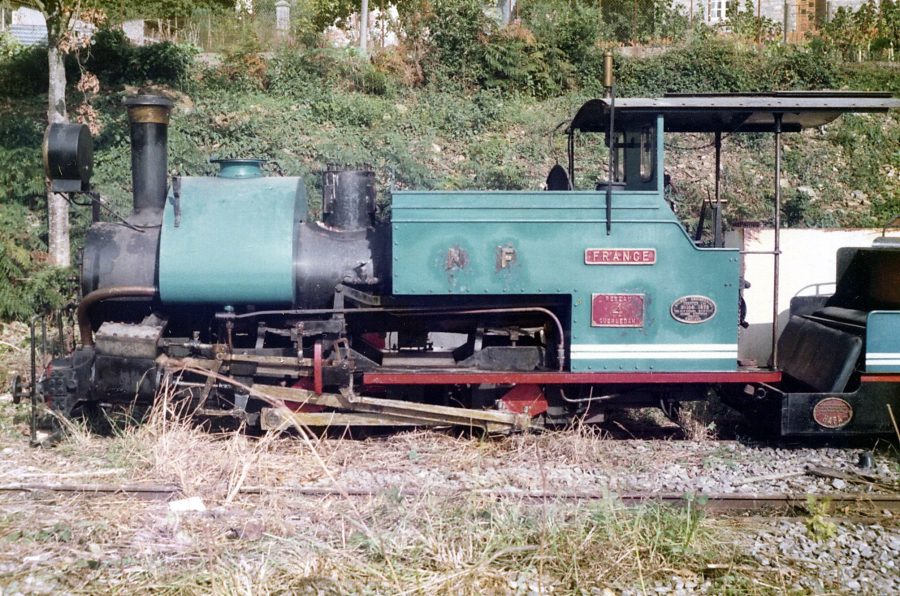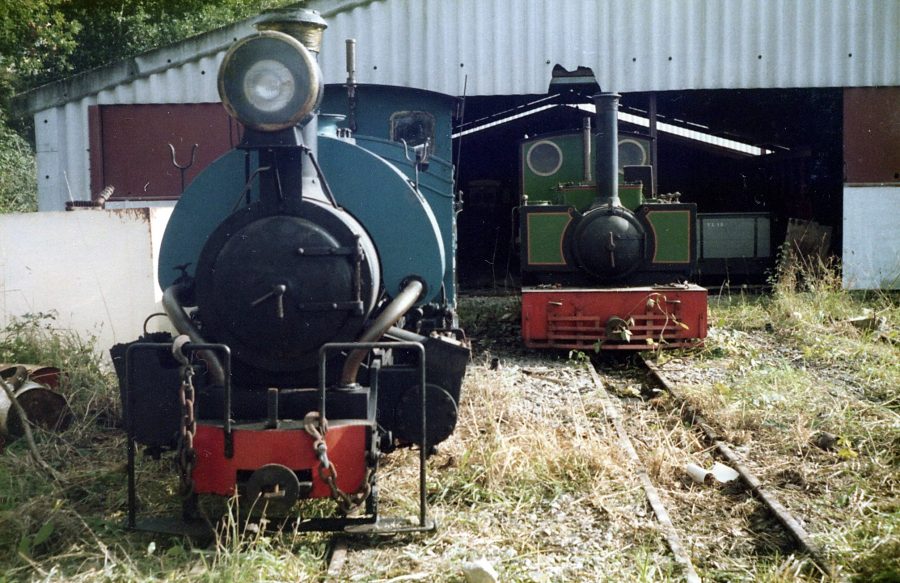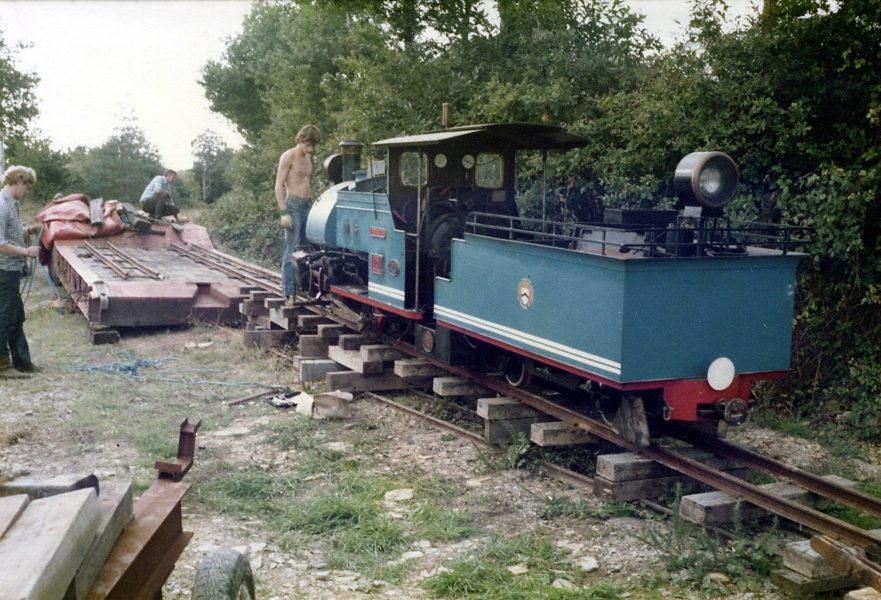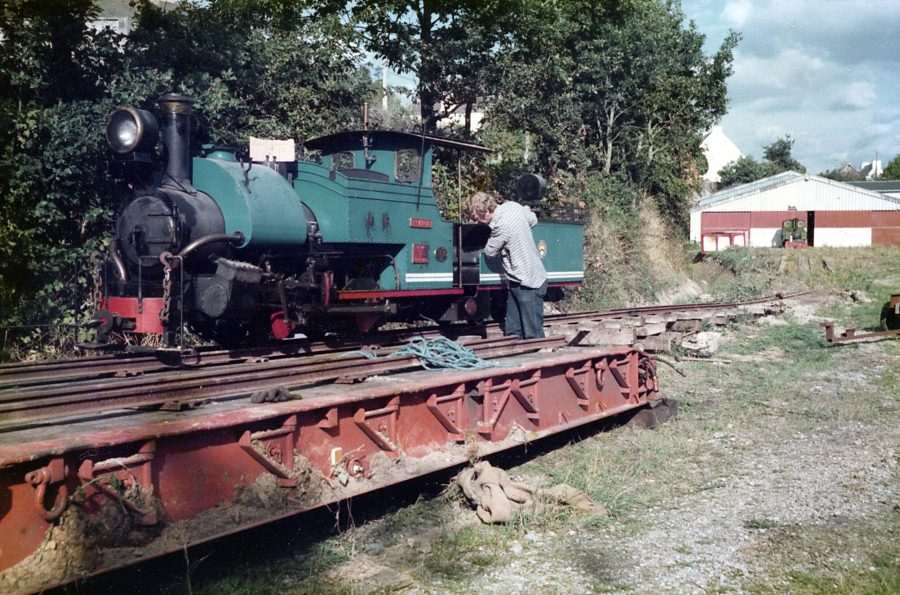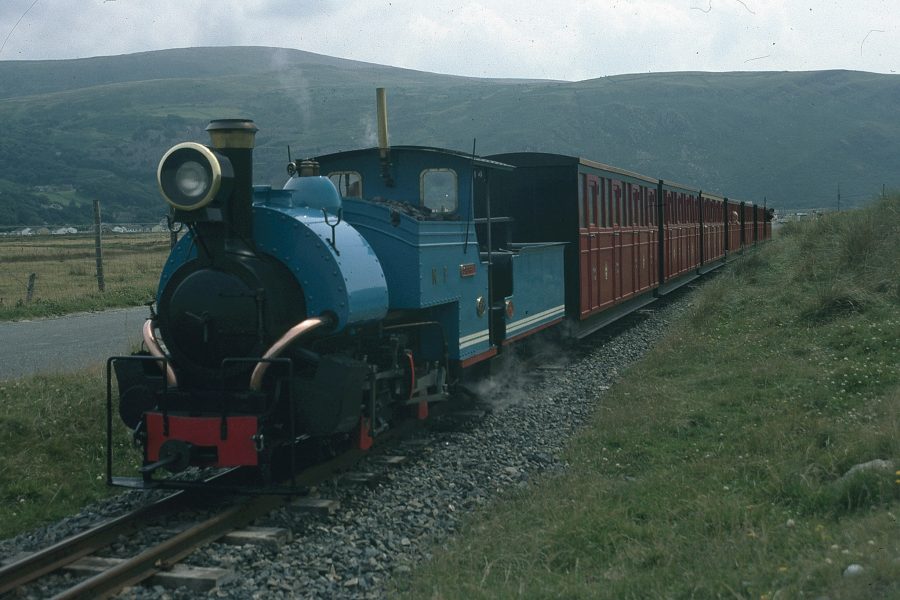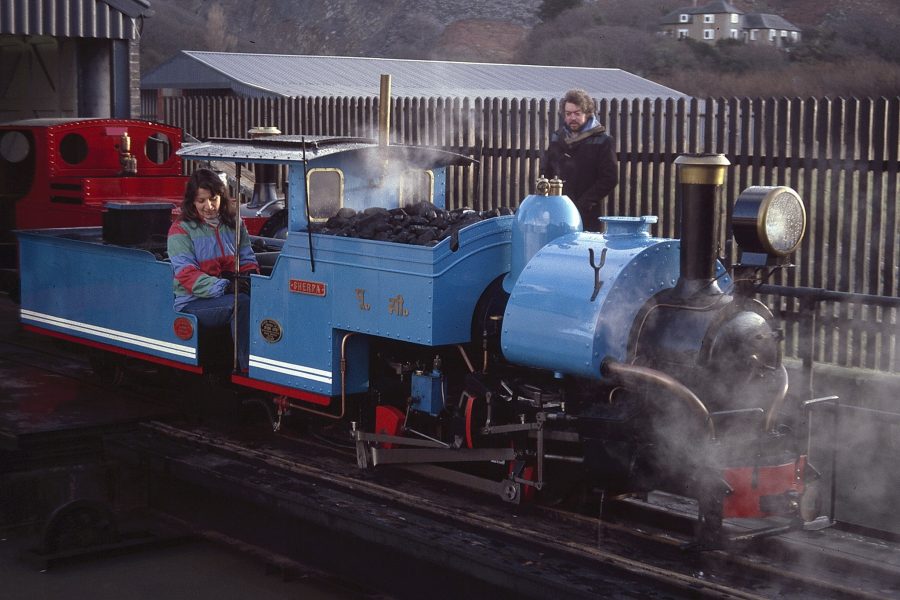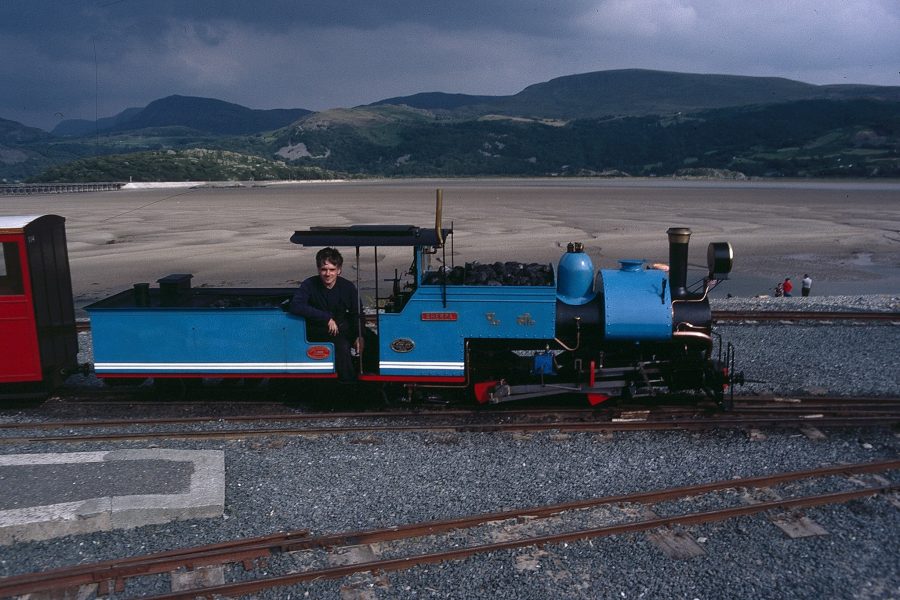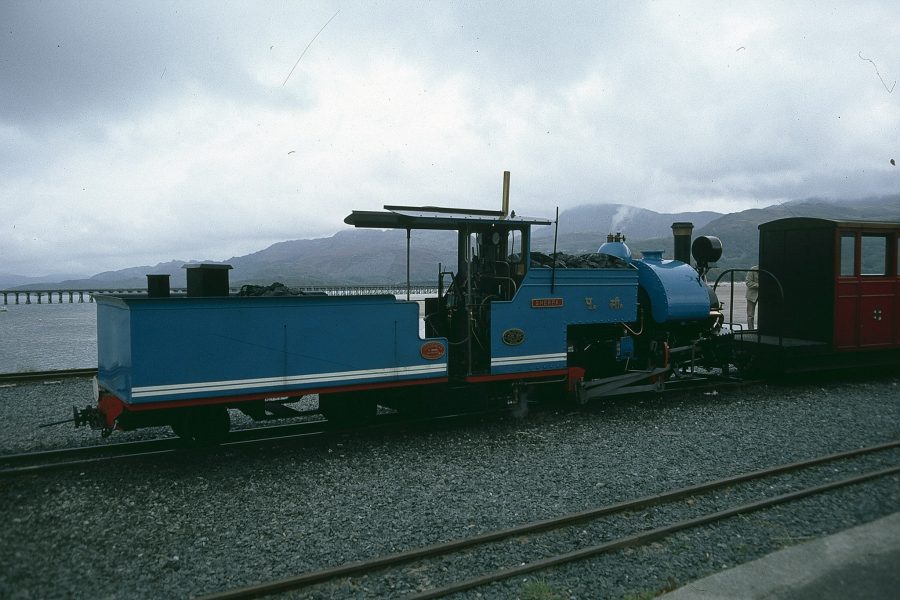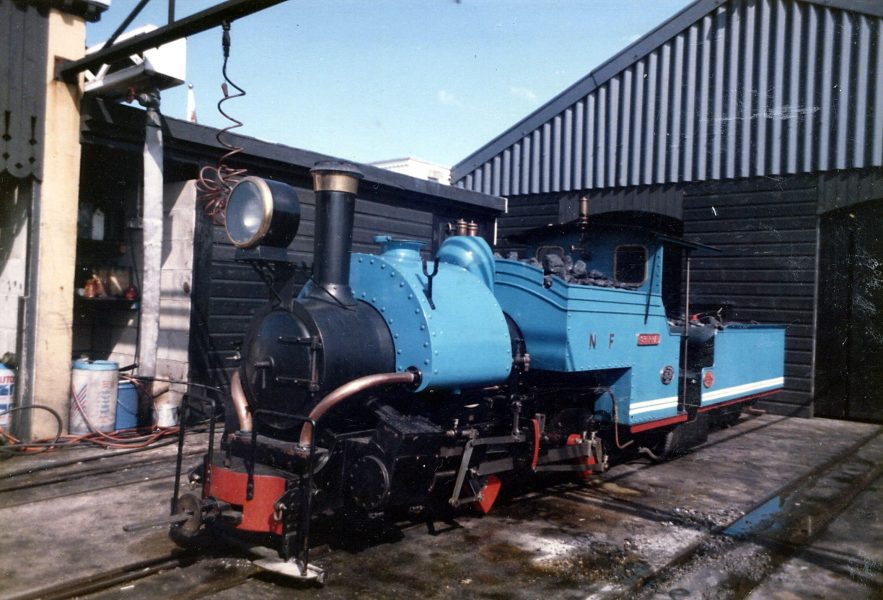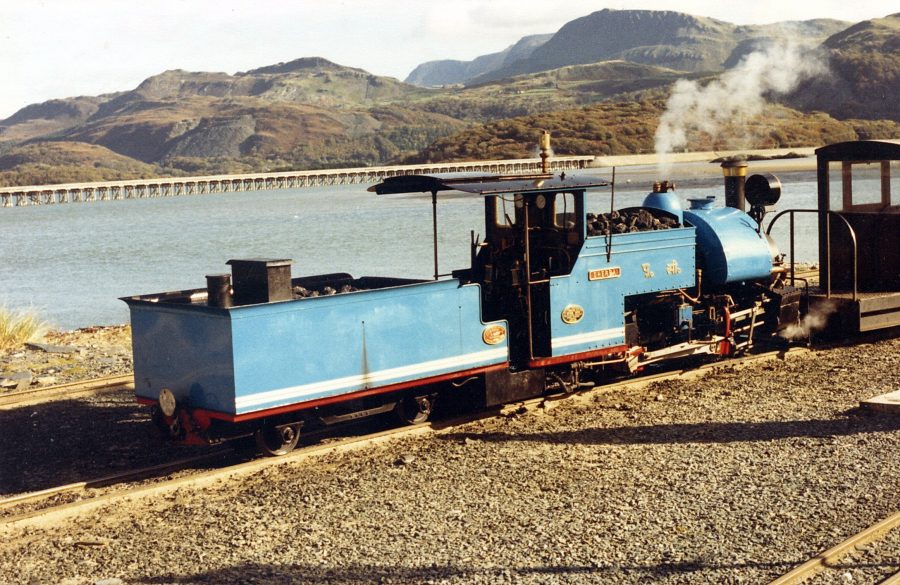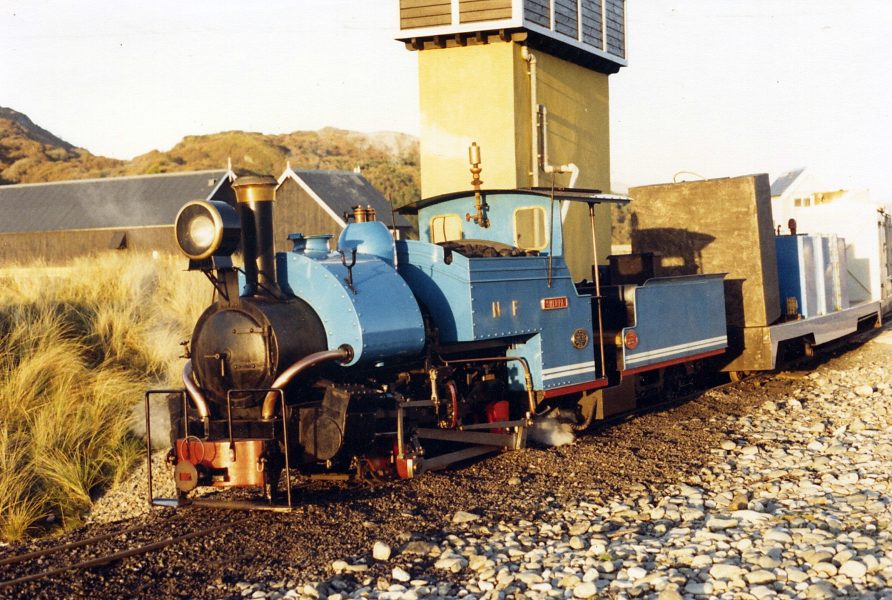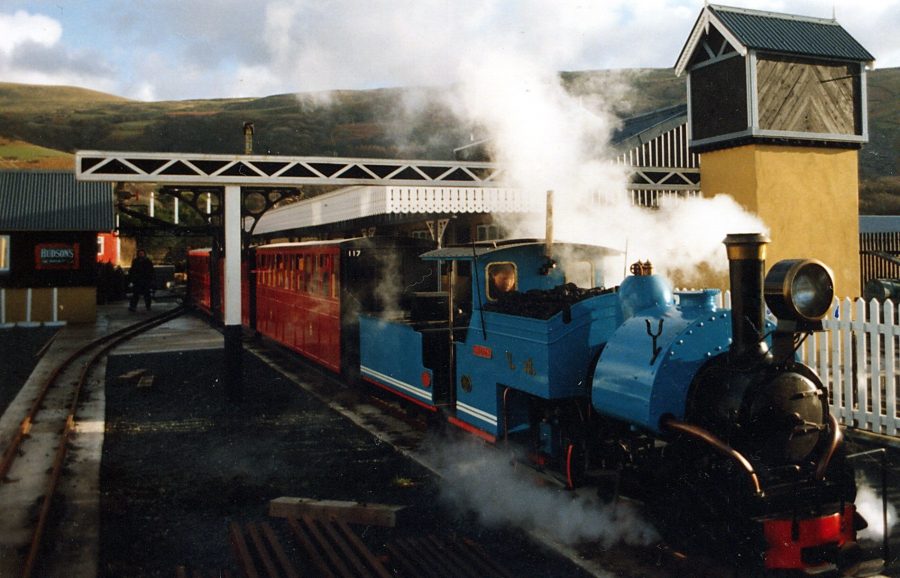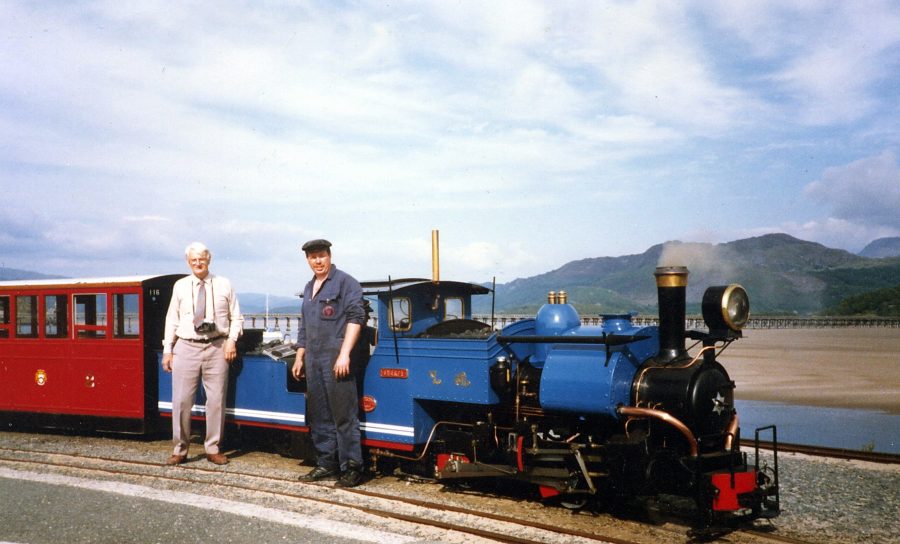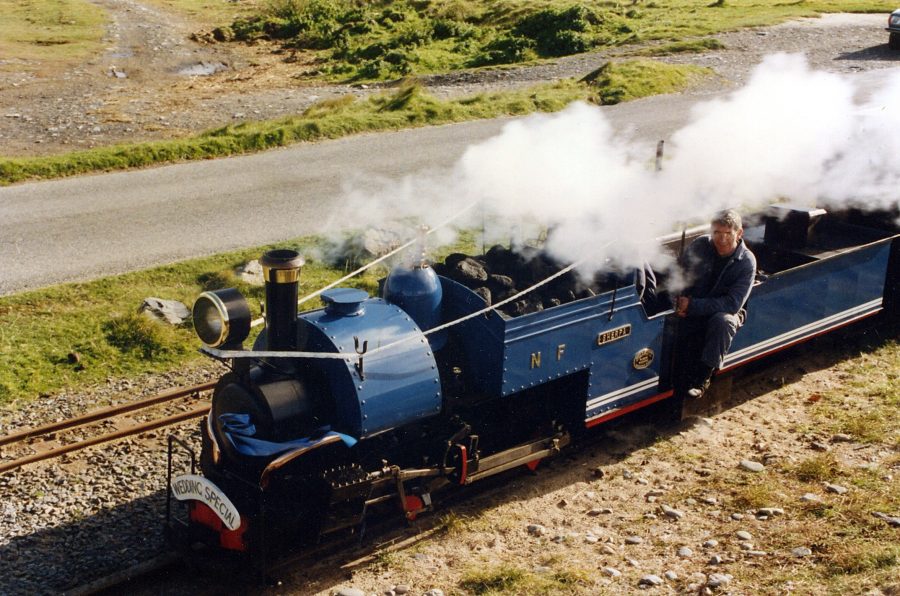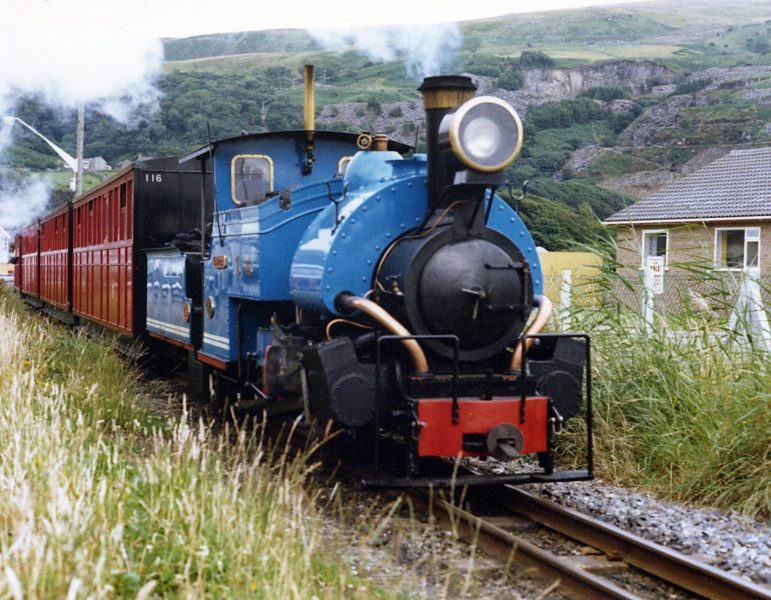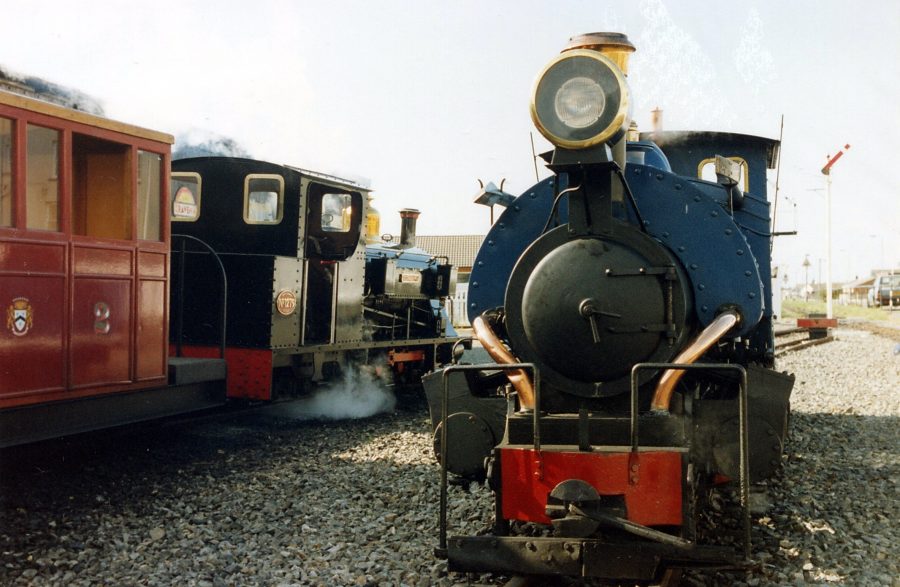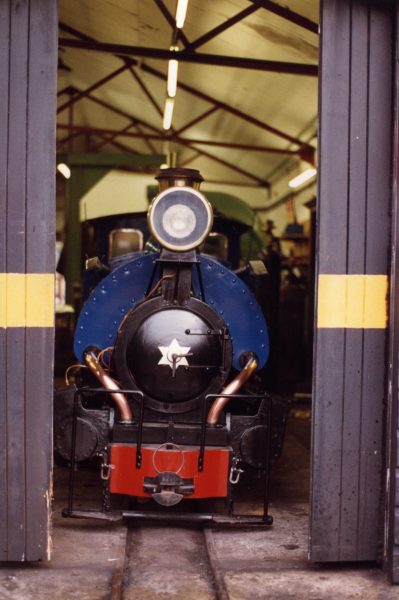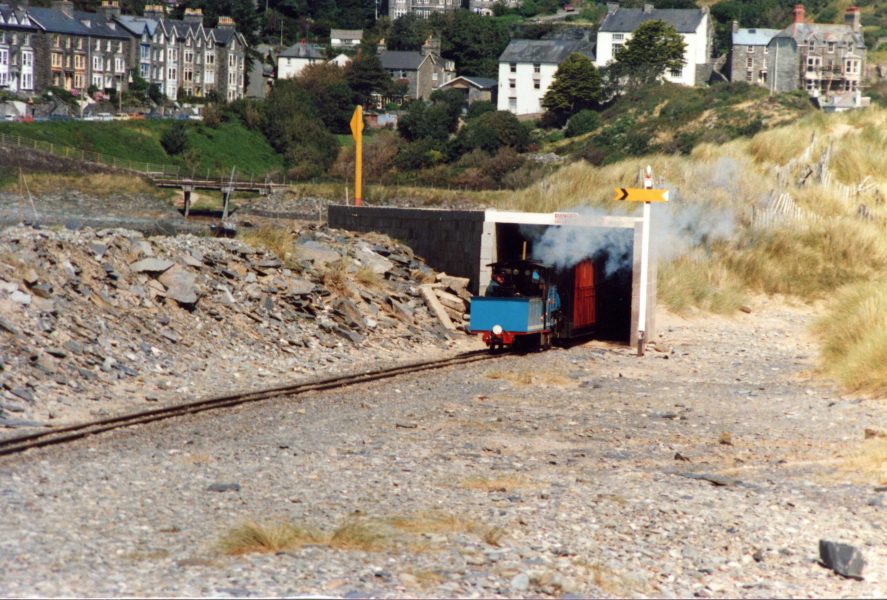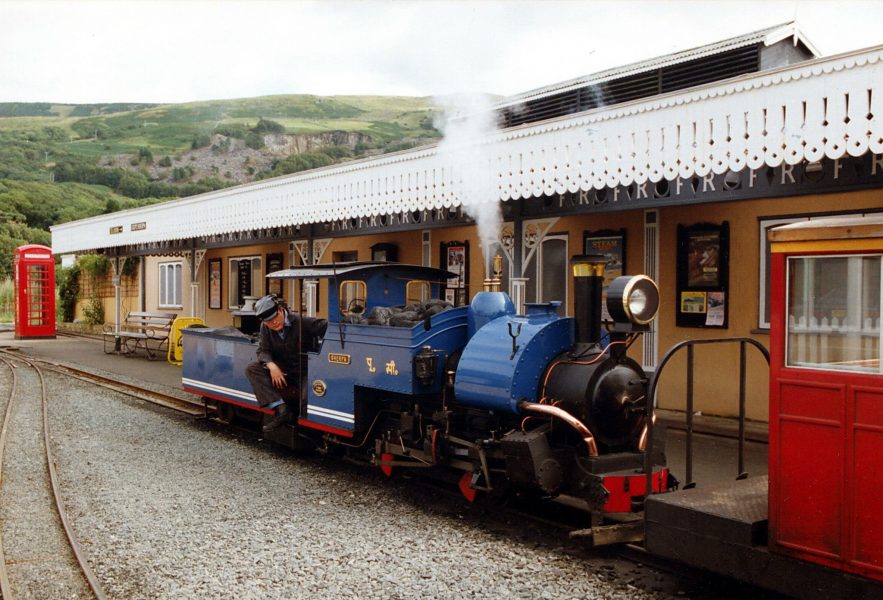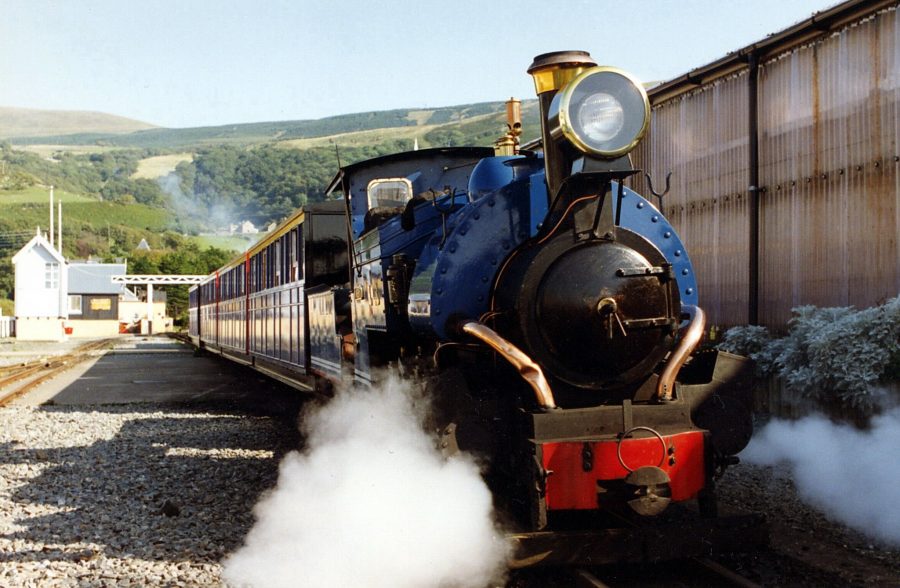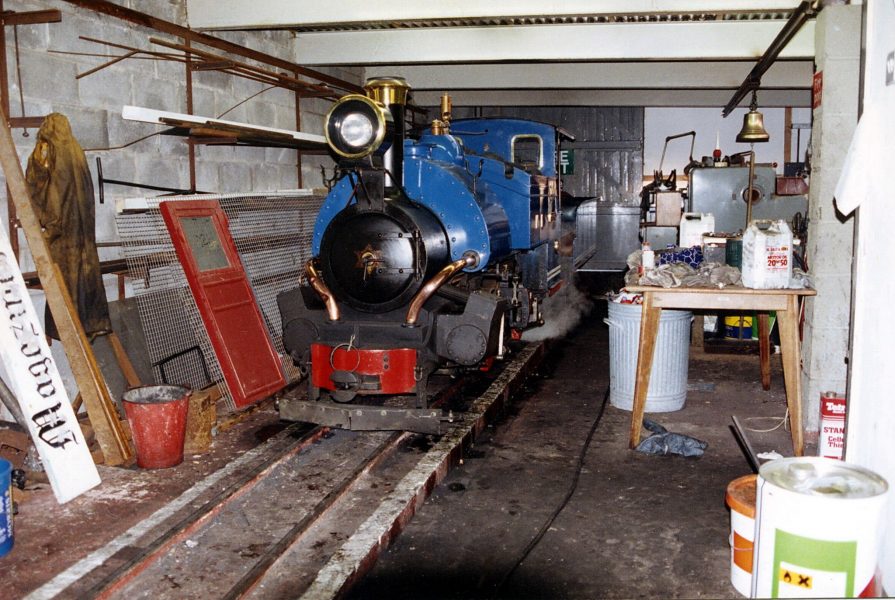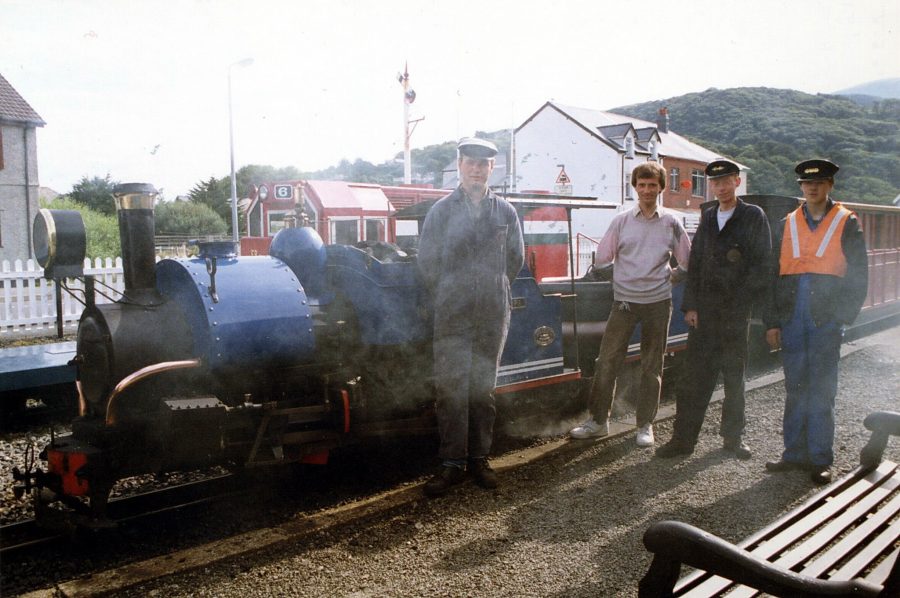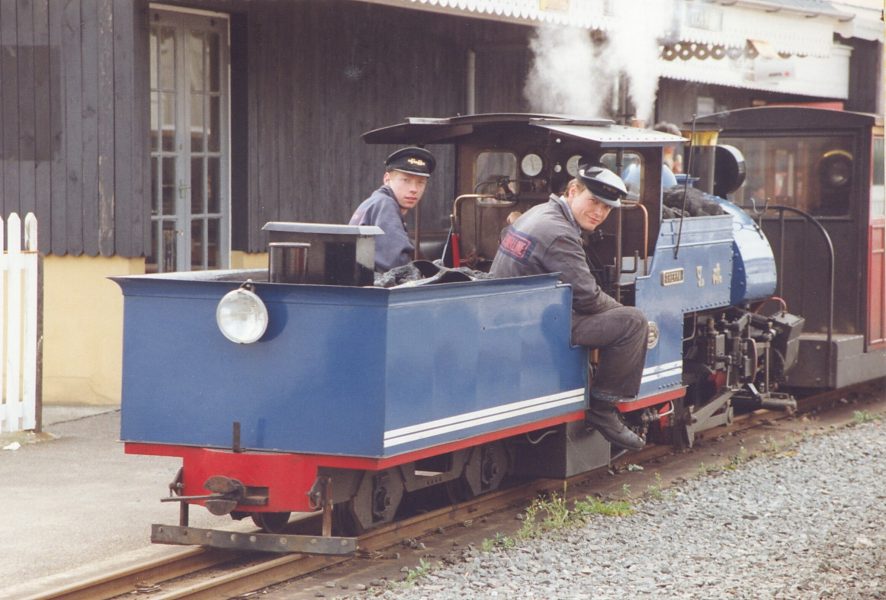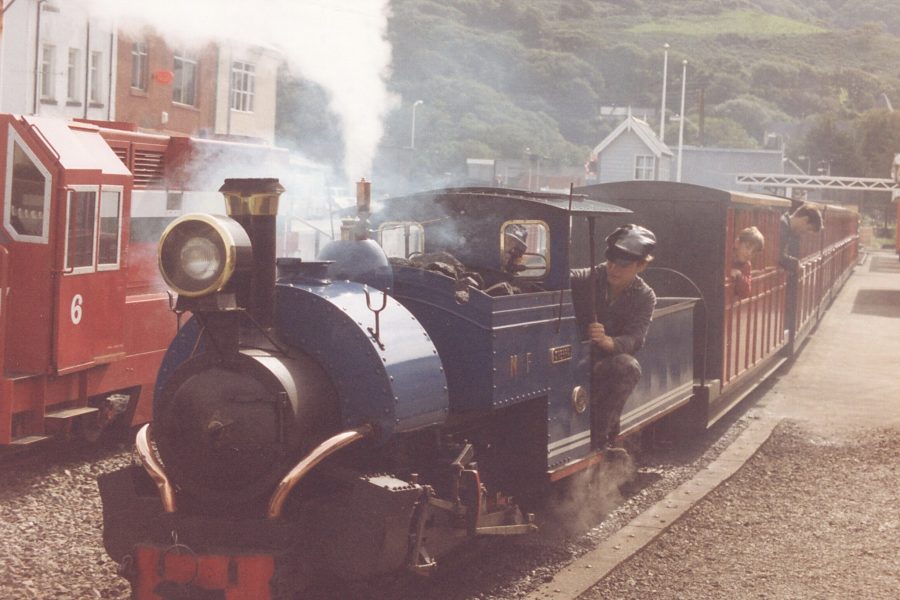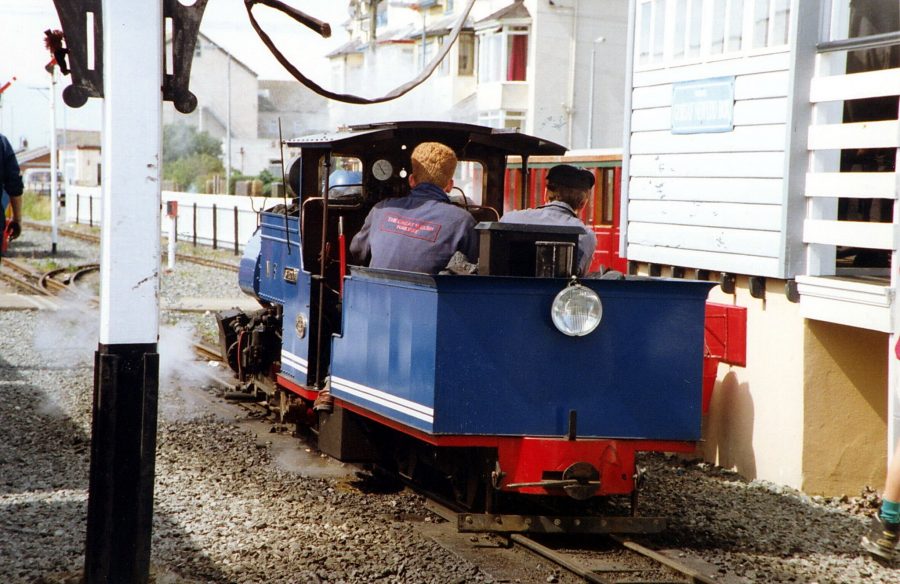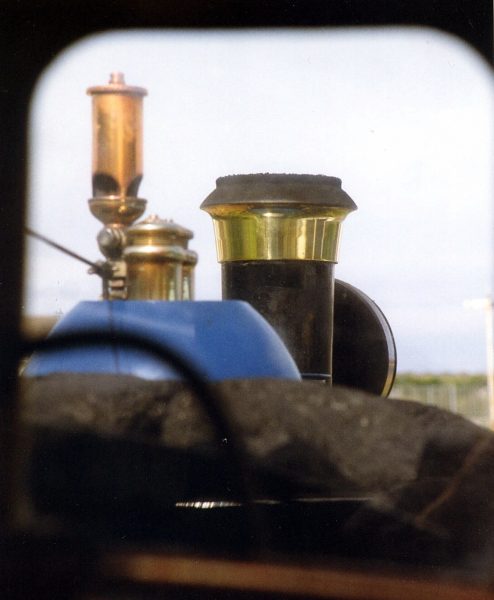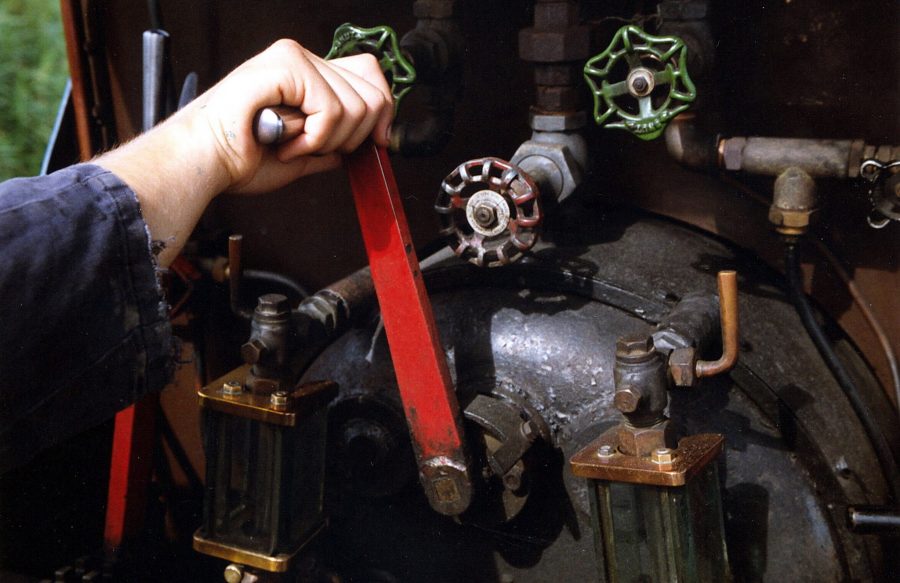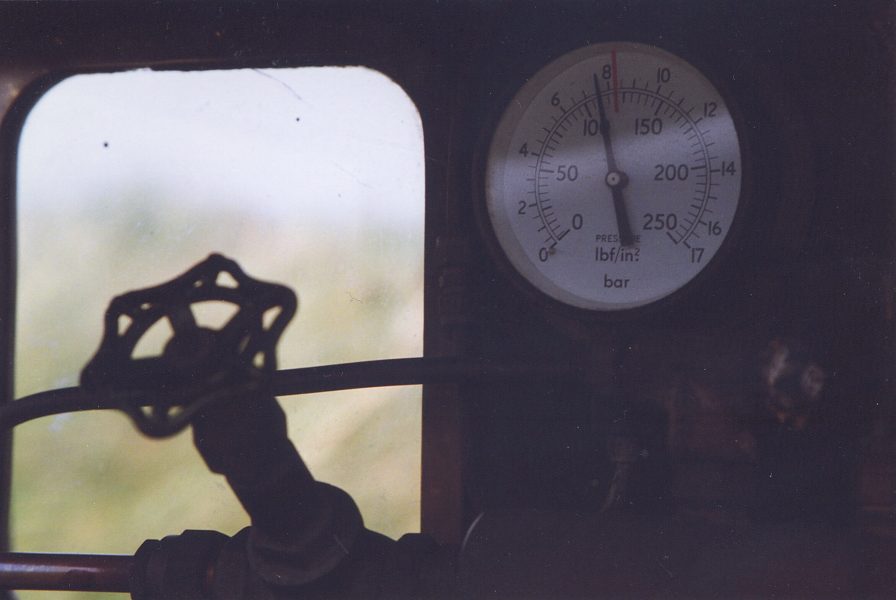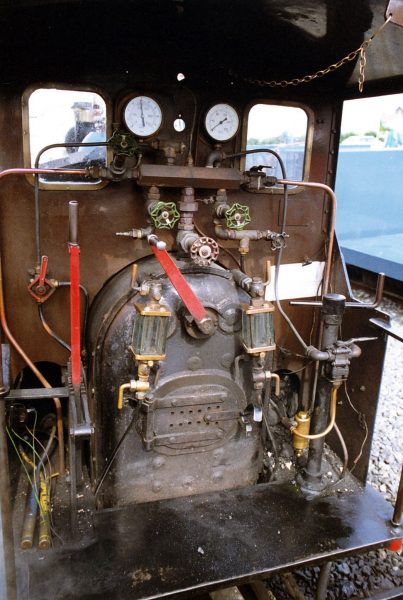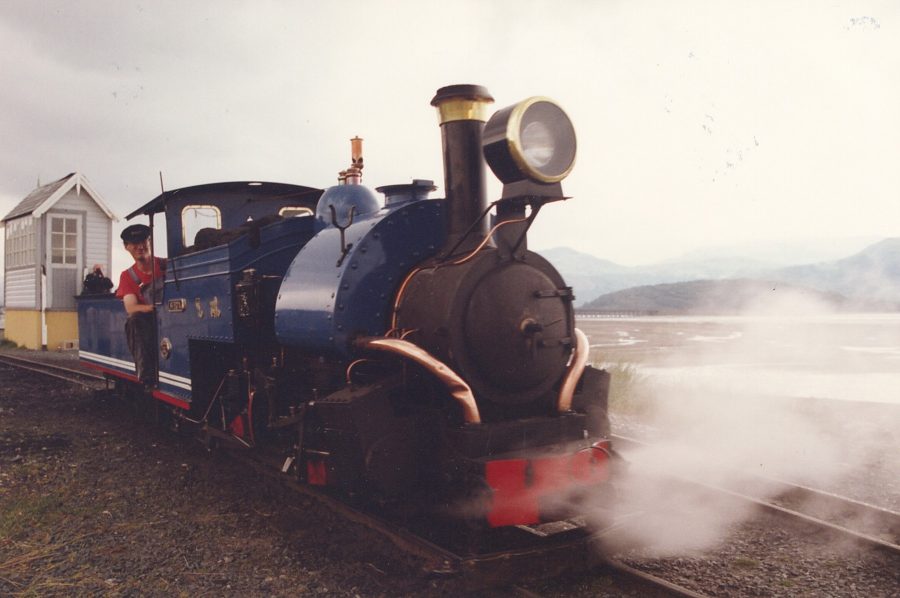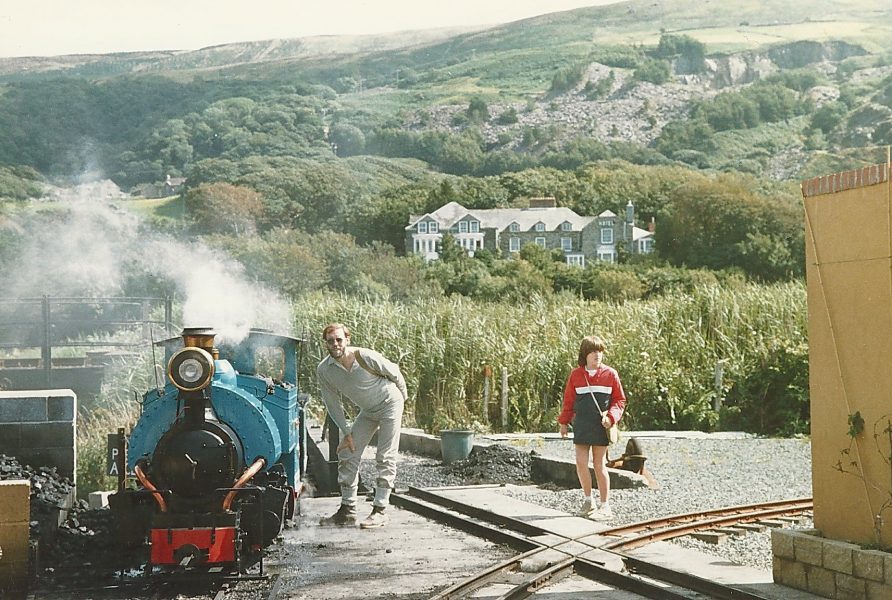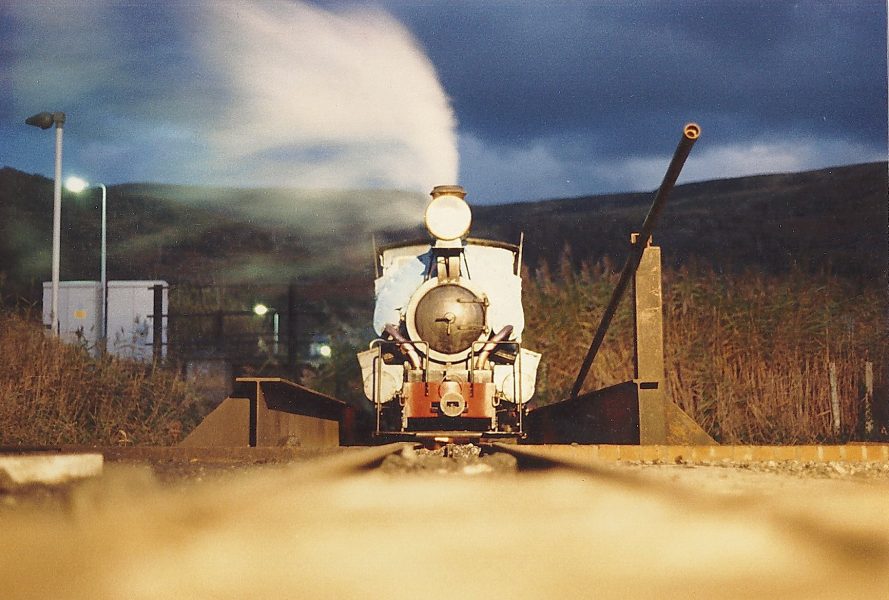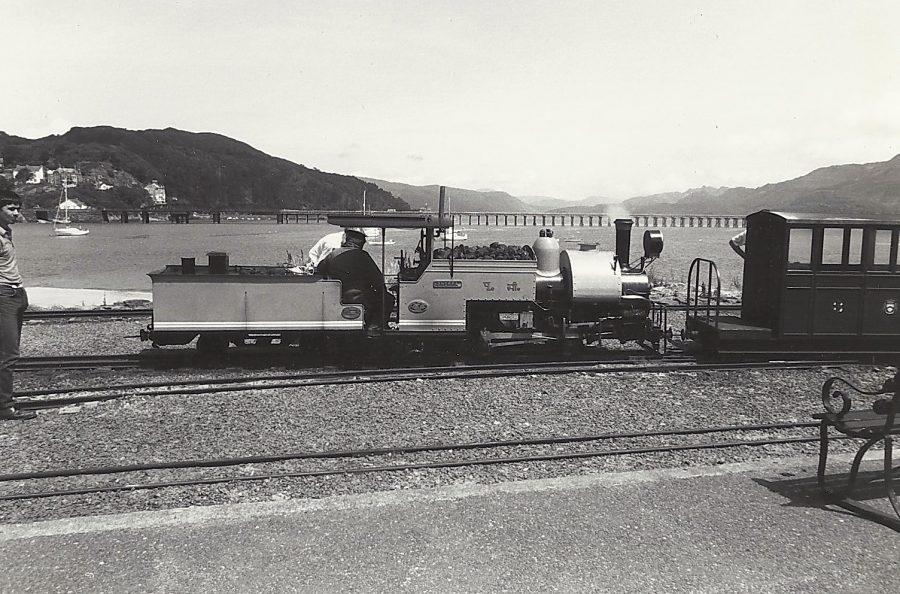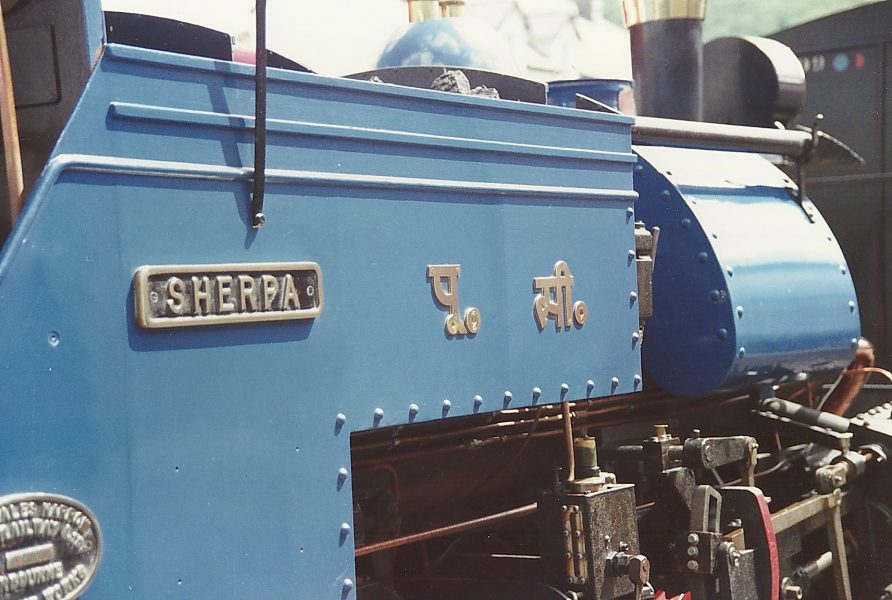Back to Fairbourne Railway Main Page
France, the half-size replica of the loco on the Darjeeling & Himalaya Narrow Gauge Railway in India was initially used on the Reseau Guerledan Railway in France during 1978 and 1979. After sitting idly for the best part of five years in Mûr-de-Bretagne, France, along with Jubilee and the rest of the rolling stock, they were recovered and shipped to Fairbourne. France was, of course, renamed to Sherpa.
France and Jubilee (later renamed to Yeo) outside of their loco sheds on the Reseau Guerledan amongst the track overgrown with years of neglect.
France being loaded ready for removal to Wales.
Now renamed, Sherpa has been shipped to the Fairbourne Railway and can be seen here approaching the Passing Loop.
Sherpa as seen above had a lighter shade of blue. Later it was given a richer darker shade of blue which, I think, had a better look. Pictured here is France sitting in the cab and John Whitehouse standing by the fence. What happened to the France plates? I have them!
Sherpa at the Point.
Sherpa at the engine preparation bay. Note the compressed air hose. This was attached to an air fitting on the locos to assist with drawing air before the engine’s own blower could be used whilst firing up the loco.
As can be seen, Sherpa is in desperate need for a new coat of paint.
Sherpa pulling the water tank. There was no mains water at the time and water had to be pumped up from the water tank to the water tower.
Sherpa in full steam at the station ready to depart.
Sydney Ellerton and Derek (aka ‘Jock’) standing next to Sherpa. Note the darker shade of blue as the new paint colour.
A special train was put on for Sydney and Gina’s wedding in 1993.
Sherpa pulling a train out of the terminus yard.
Sherpa in the siding whilst Beddgelert behind is ready to pull the next train out.
Back in the workshop
Sherpa emerging out of the second tunnel (since dismantled).
Here’s me after decoupling from the train and running round to connect at the front. Incidentally, Sherpa (then France), was the very first piece of machinery I ever drove. I was allowed to take France solo from the station at Mûr-de-Bretagne to the first road bridge and back. I was 10-years old at the time.
Sherpa departing with drain cocks fully open to release standing water in cylinders.
The usually untidy workshop. The Health & Safety lot these days would have had a ‘field day’ if they went into here!
Me, Andrew and a couple of volunteers standing in front of Sherpa.
Me reversing Sherpa before running round to the front of the train. Volunteers, like the one to the left, often enjoyed being taken on the footplate to ‘learn the ropes’.
And off we go!
Sherpa just after having a drink of water.
Looking through one of the front cab windows. Polishing brass was a never-ending affair.
Keeping a hand on Sherpa’s regulator. Red blower tap behind and two green water injector taps above. Reversing lever at far left. Two water gauges can be seen underneath indicating the amount of water present in the boiler. All drivers like to be able to see the meniscus of the water close to the top. Too high, you get spluttering water flying everywhere. Too little, you put more water in. Not enough pressure to put water? Then you begin to panic! Although there are lead fuses around the firebox which are supposed to melt to release the pressure in case such a situation occurred, it does not always work and there have been several cases of injury and death due to steam engine explosions.
This is the level of pressure all of us want to see; not too high and not too low! None of the engines had super-heated steam unlike many of the mainline steam locos. Super-heated steam would generally be around the 250psi mark. However, one remarkable case was during 1929 when the LMS Fury (aptly named) was built based on the experimental use of critically-heated steam at 900 psi. The composition of water is drastically altered at this state. Sadly, one of the tubes blew up killing a member of the Fury’s technical crew.
Sherpa’s cab. Note the blue and yellow staff and tickets sitting on the left-hand side. These are used to ensure that you have ‘possession’ of a section of line to avoid the worst of all situations, a head-on train crash.
I can’t remember how it happened, but one of Sherpa’s copper sand tubes got dented. The original railway where Sherpa ran on had many inclines so sand was used to assist with traction. At the Fairbourne, sand is the last thing that is needed. In fact, it gets into everything causing havoc with the motion gear and lubricant system.
The inevitable tourist will come and ask questions while you are shovelling coal into the tender. To the right is the railway’s only diamond crossing. Behind is the sector table which is manually pushed to move the loco onto the other track leading to the workshops.
Sherpa on the sector table. The sector table was never easy to push going counterclockwise and, despite the long extension to the handlebar, it sometimes required two individuals to shift it.
Sherpa had oodles of space for coal. Most of the coal we used sat in the tender. We tended to select nice looking larger lumps of coal for show in the front section.
